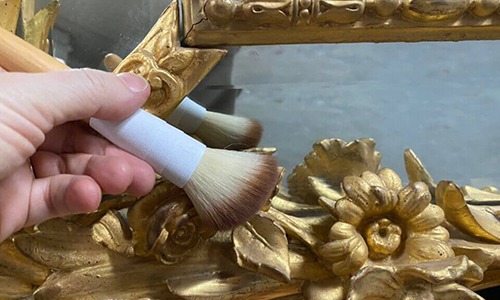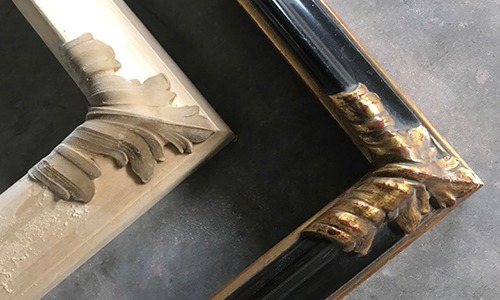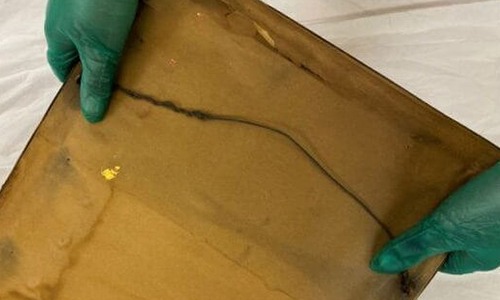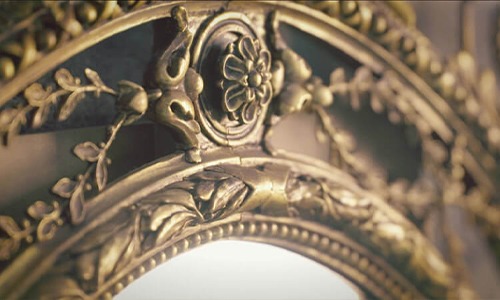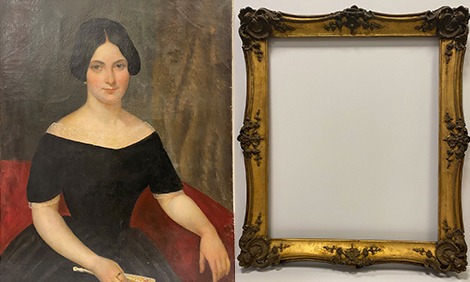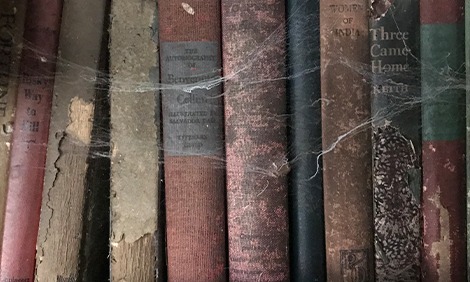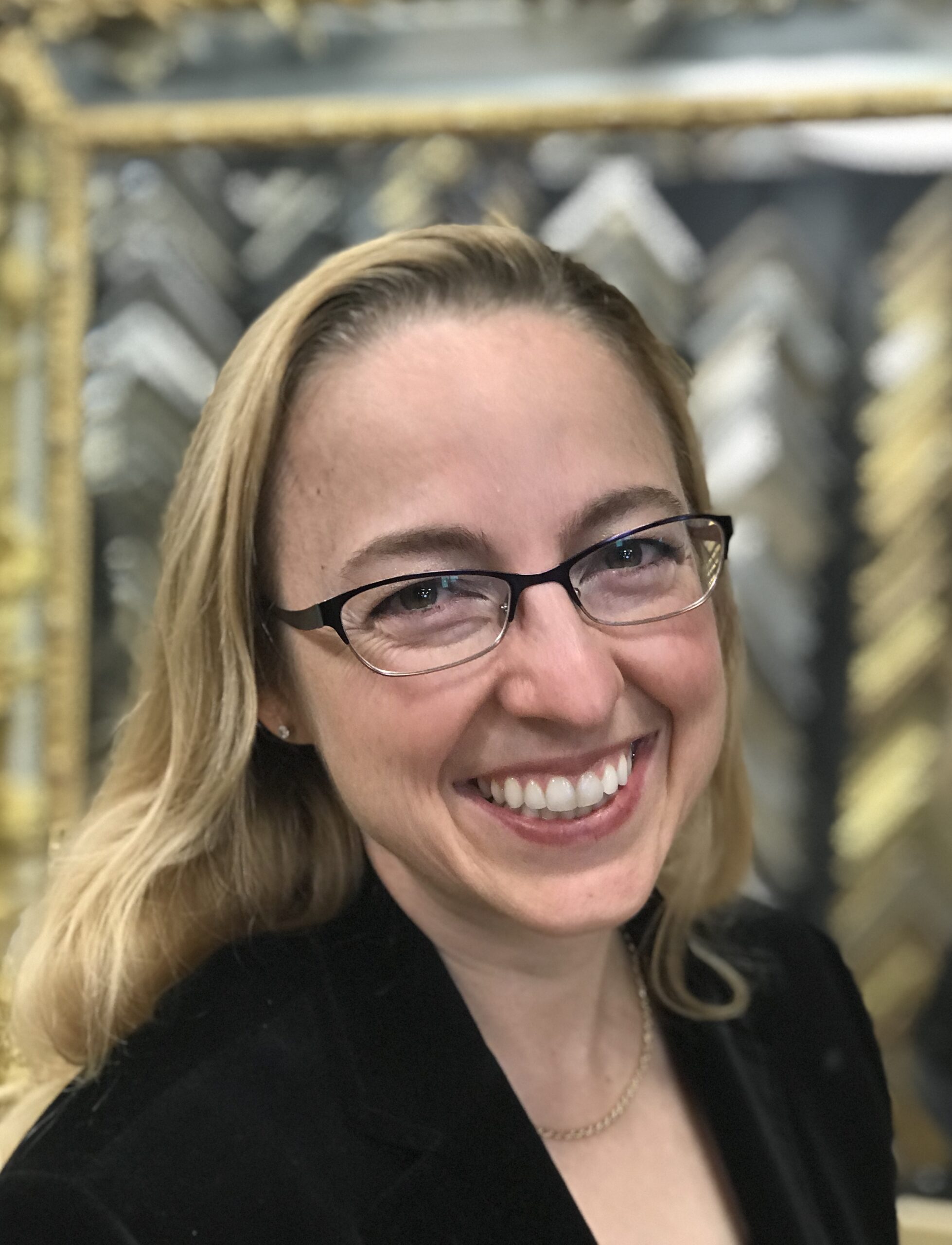
April Hann Lanford, Principal of Artifact Services
To Preserve and Protect
By April Hann Lanford
April Hann Lanford is the Principal of Artifact, a Chicago firm specializing in the preservation and protection of works of art and historical artifacts. Her story is one of curiosity and passion.
The American singer Tony Bennett is quoted as saying, “If you follow your passion, you’ll never work a day in your life.” Ever the enthusiast about antiques and history, I find myself active in a career that doesn’t feel like work but rather, feels like an adventure.
Every day brings new clients that have interesting artwork and antiques, each with their own story. Whether it is framing, a light cleaning, conservation, or a referral for another specialist, there is always a puzzle to solve.
I am often asked how I got into this field. Many see my passion for the industry and assume I went to school with this career in mind. This career was built by following my passions.
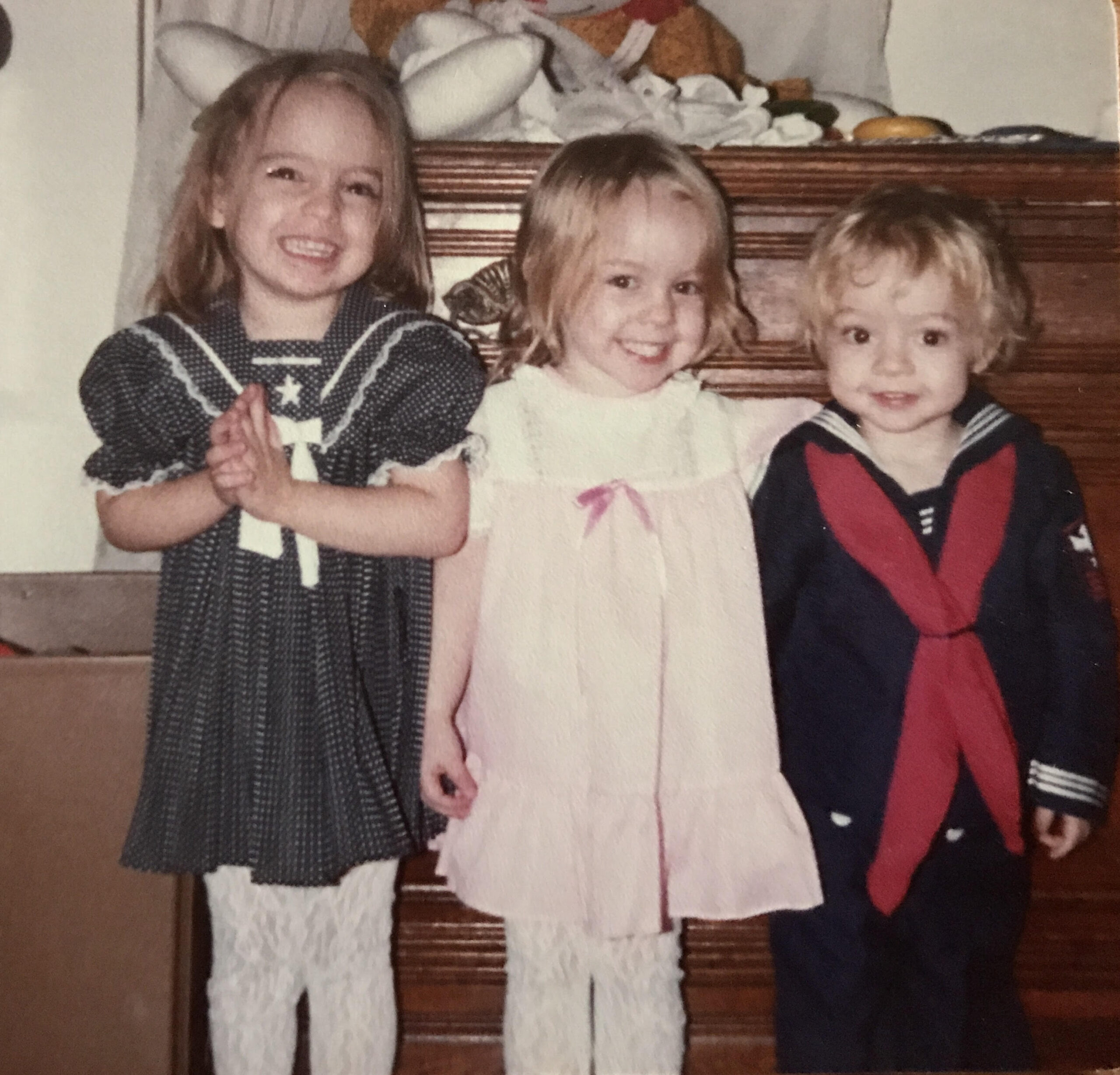
April and her two siblings grew up in a household of antiques.
My parents were entrepreneurs who owned a jewelry store. My mother ran the storefront, taking care of customers, and sourcing the merchandise. My father handled the benchwork, handling jewelry repairs, resizing rings, setting stones, and even piercing ears. My twin sister, little brother, and I got an early taste at retail and customer service by running sidewalk sales, counting back change, and collecting small 14k gold clippings around Dad’s workbench.
My parents were also avid collectors and the family would spend free time scouring antique stores for interesting items to add to our collections. At 6 years old, I started my first focused collection; it was Mr. Peanut advertising items and original tins. To this day, when I come across a rare piece, I feel a rush like when I put that first pair of 1950’s Mr. Peanut salt and pepper shakers on my dresser as a little girl.
As we grew older, my parents decided to move on from the jewelry business. I was in eighth grade when we went to our first auction. I remember vividly bidding and winning lots of vintage Buddy “L” trucks, TootsieToys, and Sun Rubber cars. My mom and I were hooked, and Mom soon found herself selling antiques with me at her side. With every acquisition, we would research and learn about the items we were reselling. I devoured and memorized as much information as possible, ready to discover the next implausible find.
My passion spilled into my school life as well. I was interested in painting and in high school took every art and photography course available. My school projects, artwork, and reports revolved around antiques and collecting. When a retiring teacher pulled me aside to ask for my opinion on his World’s Fair items, I realized my knowledge could actually help others.
I had always known I would be attending college and the School of the Art Institute of Chicago was my dream school. My portfolio was reviewed and I was accepted, but that was the easy part. Even with scholarships, the tuition was daunting. I continued to work with my mom in her antique business and got a second job at Michaels Arts & Crafts.
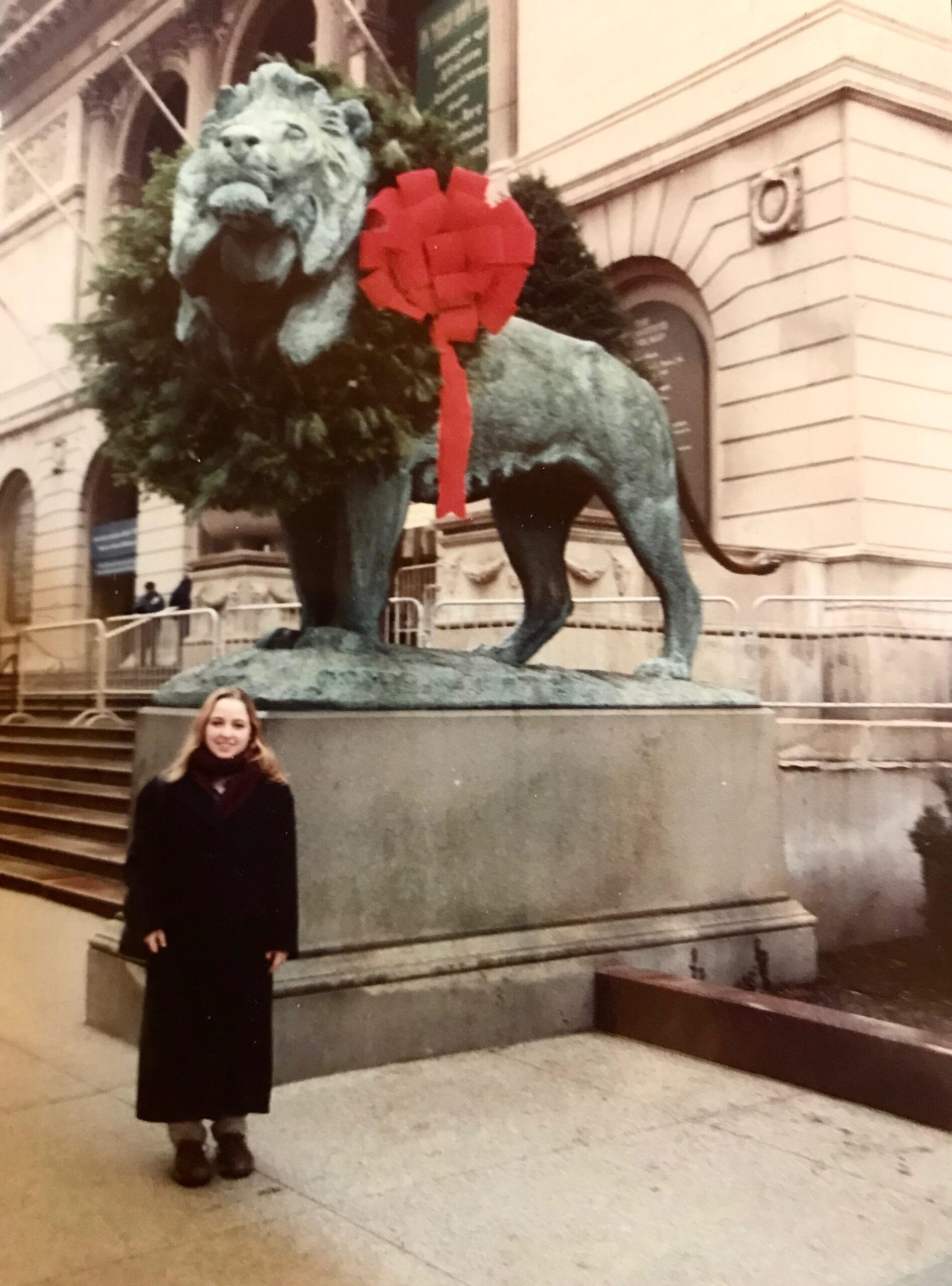
Lanford at the School of the Art Institute of Chicago, her dream school.
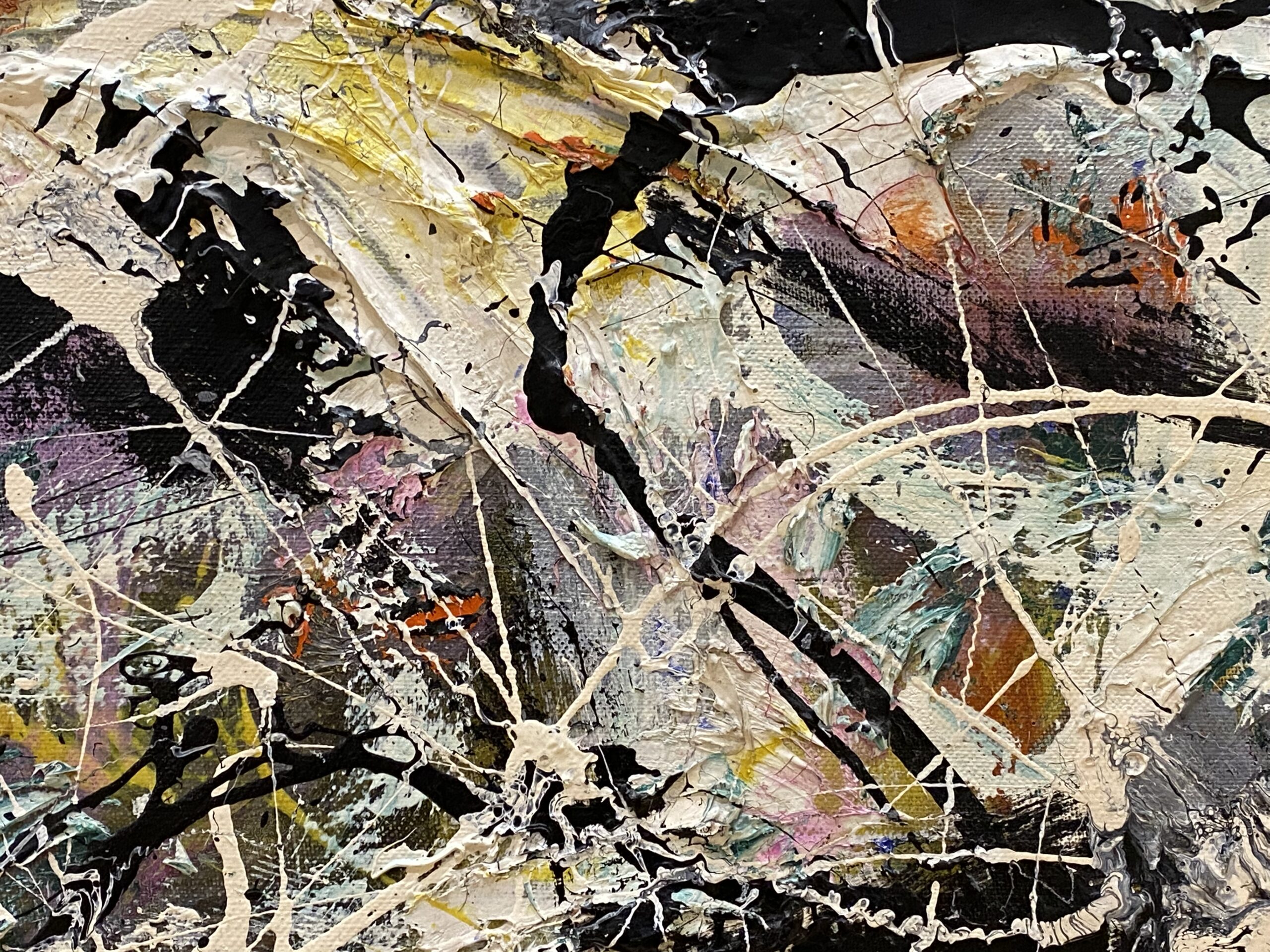
The first day of freshman year we were told, “look to your left, look to your right, these people will not be working in the field in ten years.” That lecture instilled some fear in me while also strengthened my determination to succeed. The school was conveniently adjacent to the Art Institute museum and I spent lunch breaks walking through the galleries, studying the art and artifacts on display.
Sophomore year came along and I realized I didn’t want to be a professional artist. When you are attending the preeminent art school of your dreams, that is a terrifying realization! I then decided to concentrate on art history and studio classes that focused on materials and historical painting/drawing techniques which opened a world of museum studies and the history of art creation.
This led to a class field trip to the conservation lab at the Art Institute of Chicago, where I met a conservator who was mapping out the flaking splattered paint on an original Jackson Pollock masterpiece. At that moment, I realized there was this incredible field where you could be at the intersection of fine art, conservation, art history and knowledge of materials. By this time, I was a custom picture framer at Michaels and the knowledge I was gaining from my studies allowed me to talk to customers about the importance of archival materials, UV filtering glass and the history of design.
One day during a lunch break, I saw two museum staff in the Dutch gallery, looking at a miter corner on an antique frame. I couldn’t resist and approached them. As it turned out, one was the director of the conservation department. He took my contact information and said I would get a call. After two months without a word, I decide to reach out again and, due to my persistence, I was able to meet the frame conservator and landed a volunteer internship position.
While interning, finishing my degree, working at the Michaels and assisting my mom, I told myself that pursuing all of these paths would help in the long run. This eclectic mix worked well. I was constantly learning, meeting interesting people, taking care of nice things, and paying my bills.
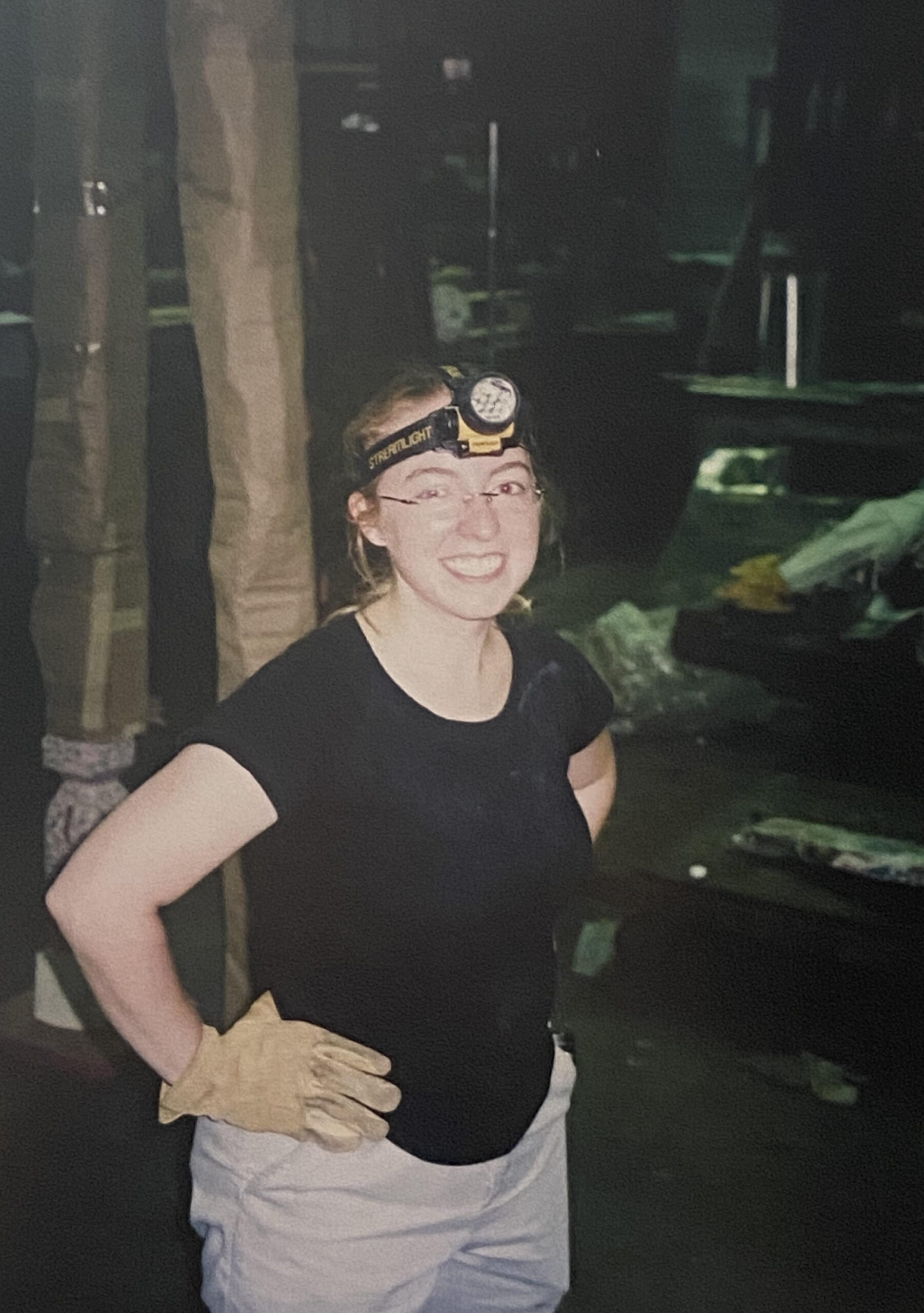
April Hann Lanford doing recovery work in the aftermath of Hurricane Katrina.
After graduating from college, I started studying chemistry and worked for the curator and the conservator for the largest private art collection in the Midwest, The Union League Club of Chicago. The insights I gained by assisting the painting conservator and assisting with the installation, display, and educational outreach of a large art collection increased my passion and excitement.
By 2004, my career path led me to the private sector, where I worked for privately owned conservation firms working for museums, the insurance industry and general public. I first started assisting clients for disaster response during Hurricane Katrina in 2005, running an emergency hotline to help clients who had collections in danger and facing catastrophic loss. Each disaster I respond to—Hurricane Katrina, Sandy, Matthew, Harvey, the wildfires in California and the debris flow in Montecito to name a few—reinforces my passion for helping others and preserving our past.
Even though I love preserving objects hands on, I find the most joy and fulfillment in working with colleagues and collectors to preserve and display their cherished pieces.
Some say that when you go on vacation, it isn’t about the destination, but the journey. There is a lot to be said for following your passions. Having a destination can help you find your way, but if you keep an open mind and not let the destination blind you to exploration, you can find yourself in a career perfectly tailored to you.
Click here to view original article that was published in Antique Trader.
To Preserve and Protect, by April Hann Lanford
Our collection of educational articles about
custom framing, collection care, and emergency response are updated regularly.
Click on each topic below for a menu of corresponding articles.
Collection Care Articles
By April Hann Lanford
Our collection of educational articles provides an introduction to many topics about the preservation and conservation of fine art, antiques, and fine furniture.
Topics are often written as a result of questions provided by our clients.
Emergency Care Articles
By April Hann Lanford
Our emergency care articles are a helpful introduction to how to prevent damage through preventative measures or art and antique collections. When a disaster strikes, prompt response and taking the right steps can mitigate further damage.
Antique Trader Articles
By April Hann Lanford
Visit our collection of articles that have been published in Antique Trader.
antiquetrader
For more than 60 years Antique Trader has been inspiring, informing, and entertaining the collecting community with timely...
Projects
By April Hann Lanford
A selection of Artifact’s most recent projects highlighting our conservation and preservation work. We present each unique story describing the conservation process from reviewing the history, cause of loss, and condition to the steps of the treatment.
Glossary
A collection of art and conservation terms along with makers and firms compiled into a glossary and highlighted throughout our website for reference.
We are available to assist you
Main Location
840 N. Milwaukee Ave, Chicago IL 60642
Mon-Fri: 9:00 am - 5:30 pm
Sat: 10:00 am-4:00 pm
Sun: Closed
Complimentary parking is available in the loading zone in front of the building
We can also serve you by appointment at our other locations in the Chicagoland area.
Additional Locations
Schiller Park • Highland Park • Lake Forest • Lincoln Park • Nashville, TN
Copyright 2024, Artifact Services, LLC | An Artmill Group Company
